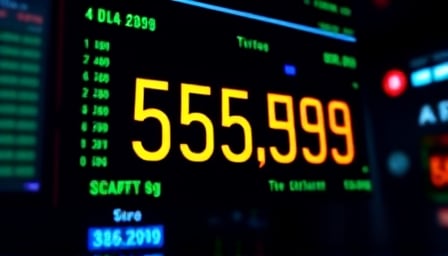In the ever-evolving landscape of cryptocurrency, Rune has emerged as a focal point of discussion, particularly in light of its recent performance metrics. As of September 16, 2025, Rune’s close price stood at $1.33807, a figure that starkly contrasts with its 52-week high of $19.726 recorded on December 16, 2024. This dramatic fluctuation underscores the volatile nature of the cryptocurrency market, where fortunes can pivot on the axis of investor sentiment and market dynamics.
The 52-week low of Rune, observed on April 6, 2025, at $0.963473, further illustrates the precarious journey of this digital asset. Such volatility is not uncommon in the cryptocurrency realm, yet it raises critical questions about the stability and reliability of these digital currencies as viable financial instruments. The stark disparity between Rune’s peak and trough within a single year highlights the speculative nature of cryptocurrency investments, where high risk is often accompanied by the potential for high reward.
Rune’s market capitalization, currently valued at $6,748.86 USD, positions it as a relatively minor player in the vast cryptocurrency ecosystem. This valuation prompts a critical examination of Rune’s utility, adoption, and long-term viability. In a market dominated by giants like Bitcoin and Ethereum, smaller cryptocurrencies like Rune must navigate a challenging landscape, where visibility and investor confidence are paramount.
The fluctuations in Rune’s valuation and its modest market cap raise pertinent questions about the factors driving its performance. Is Rune’s journey reflective of broader market trends, or does it signify unique challenges and opportunities within its ecosystem? The answers to these questions are crucial for investors and stakeholders seeking to understand the potential of Rune and similar cryptocurrencies.
Moreover, the dramatic shifts in Rune’s price point to the broader implications for the cryptocurrency market. They serve as a reminder of the inherent risks associated with digital currencies, where regulatory changes, technological advancements, and shifts in investor sentiment can have profound impacts. For Rune, navigating this complex landscape requires not only technological innovation but also strategic positioning to enhance its appeal and utility in a competitive market.
In conclusion, Rune’s recent performance metrics offer a microcosm of the challenges and opportunities facing cryptocurrencies today. As the digital currency landscape continues to evolve, the journey of Rune will be closely watched by investors, analysts, and enthusiasts alike. Its ability to adapt, innovate, and capture the imagination of the market will be critical in determining its place in the future of finance.
